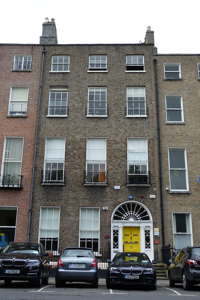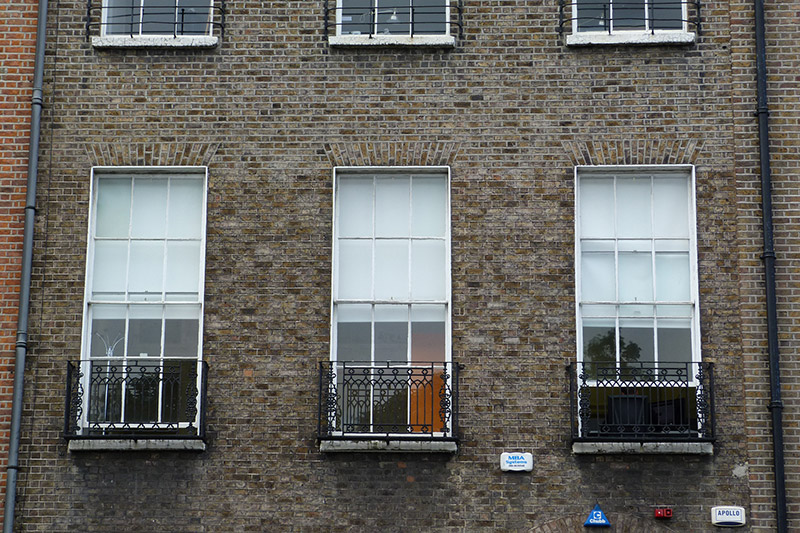Survey Data
Reg No
50100409
Rating
Regional
Categories of Special Interest
Architectural, Artistic
Original Use
House
In Use As
Office
Date
1775 - 1795
Coordinates
316550, 233508
Date Recorded
28/07/2016
Date Updated
--/--/--
Description
Attached three-bay four-storey former house over basement, built c. 1785, with two and three-storey return to rear. Now in use as offices. Pitched slate roof to front, behind having brick parapet with granite coping, and with two hipped roofs to rear perpendicular to street, larger over eastern bays; flat and hipped roof to rear return. Shouldered rendered chimneystacks with lipped clay pots. Parapet gutters and shared replacement uPVC downpipe. Flemish bond brown brick walls on painted granite plinth course over painted rendered basement walls. Square-headed window openings, diminishing in height to upper floors, with raised rendered reveals to ground and first floors, painted granite sills and painted granite block-and-start surrounds to basement openings. Round-headed stairs window opening to rear. Timber sliding sash windows throughout, without horns except for top floor front and rear and second floor rear, which have convex horns; three-over-three pane windows to top floor front and rear and six-over-six pane elsewhere. Cast-iron balconettes to first floor of front and rear elevations, wrought-iron window-guards to second floor front, and wrought-iron grilles to basement. Round-headed painted masonry doorcase having rendered linings, engaged Ionic columns and respond pilasters framing geometrically glazed sidelights, stepped fluted frieze and cornice, full-width petal fanlight and timber flat-panel eight-panel door with beaded muntin and brass furniture. Granite platform with cast-iron boot-scrapes and five granite steps to street. Basement area enclosed by wrought-iron railings with decorative cast-iron posts on painted granite plinth. Cast-iron coal-hole covers set in granite flagged pavement. carparking to rear.
Appraisal
Likely built in conjunction with No. 78, the overall character of No. 79 is well retained, featuring a wide, elaborate Ionic doorcase, complete with petal fanlight and sidelights. This wide form of entrance was introduced to provide additional natural light into the entrance hall and serves to enrich the appearance of the well-proportioned, yet otherwise relatively austere façade. The balconettes add further decorative interest to the facade, and the intact railings and setting details significantly contribute to the intact appearance of the square. Developed as part of the Fitzwilliam Estate, Merrion Square is one of the best-preserved Georgian streetscapes in Ireland. The north, east and south sides of the square are lined with terraced houses of eighteenth and early nineteenth-century date, while the west side is terminated by the garden front of Leinster House. The houses maintain a relatively uniform building height and design, attributed to standards promoted in Fitzwilliam's leases. Individuality was introduced through the design of doorcases, window ironwork and interior decorative schemes. The south side of Merrion Square was initially set in large plots to twelve lessees; plots were leased consecutively from east to west up to 1791.



















